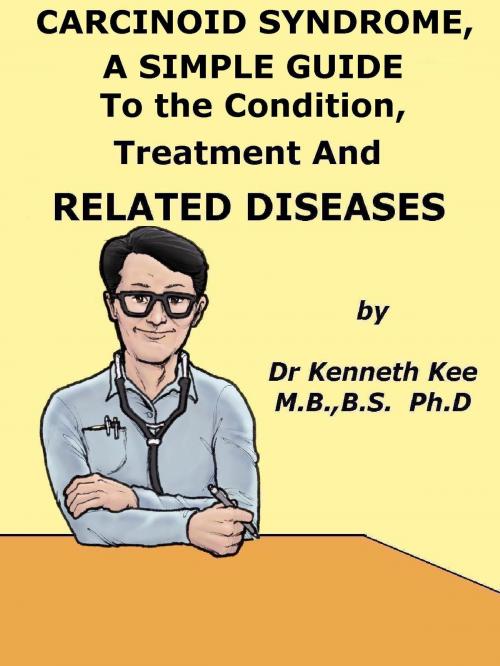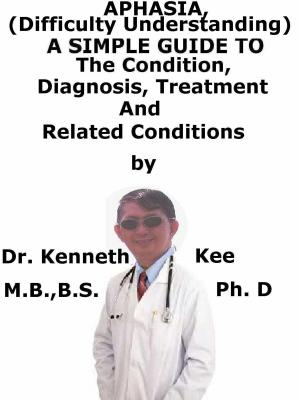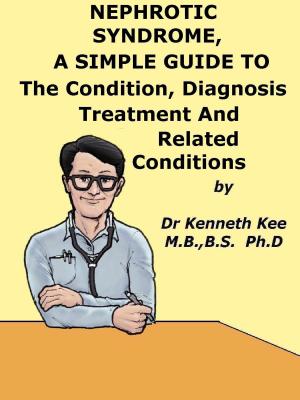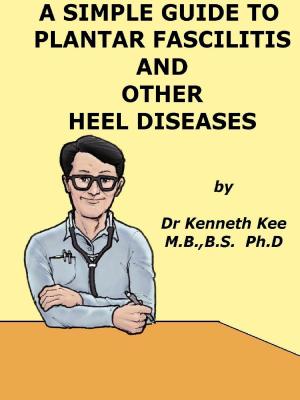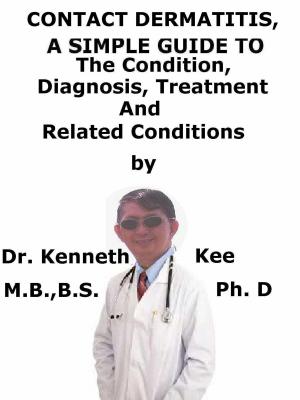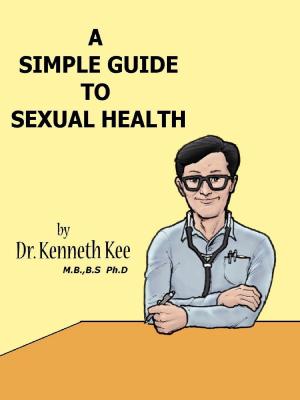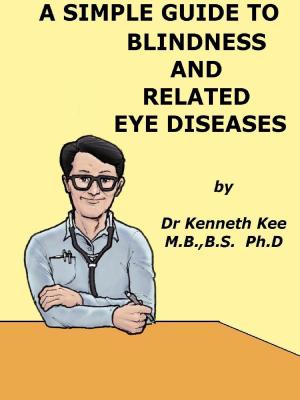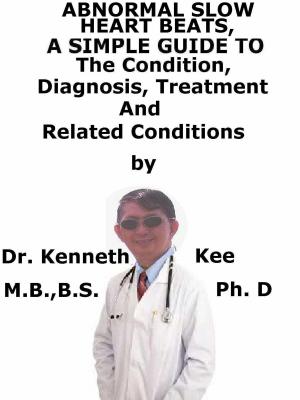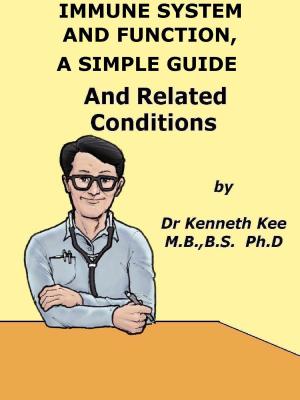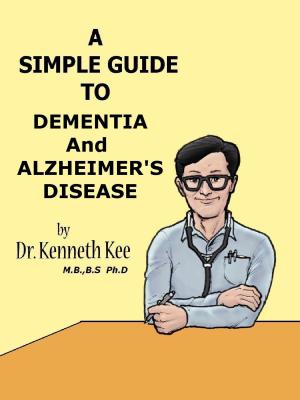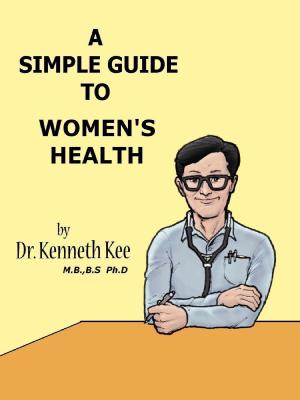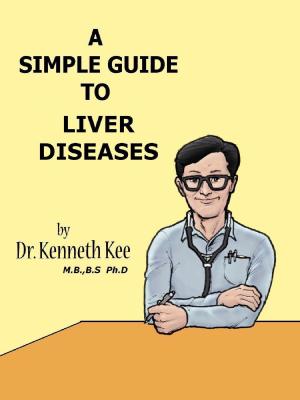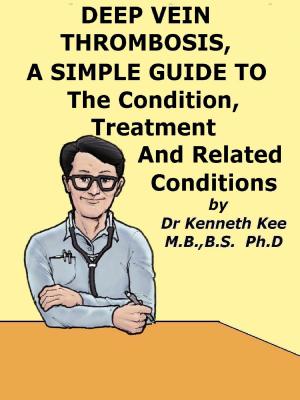Carcinoid Syndrome, A Simple Guide To The Condition, Treatment And Related Diseases
Nonfiction, Health & Well Being, Medical, Specialties, Oncology, Health, Ailments & Diseases, Cancer| Author: | Kenneth Kee | ISBN: | 9781311947390 |
| Publisher: | Kenneth Kee | Publication: | February 3, 2015 |
| Imprint: | Smashwords Edition | Language: | English |
| Author: | Kenneth Kee |
| ISBN: | 9781311947390 |
| Publisher: | Kenneth Kee |
| Publication: | February 3, 2015 |
| Imprint: | Smashwords Edition |
| Language: | English |
Carcinoid syndrome is a group of symptoms associated with carcinoid tumors
Tumors of the small intestine, colon, appendix, and bronchial tubes
Carcinoid tumors produce the vasoactive substance, serotonin
Vasodilation of the blood vessels causes flushing
The flushing results from secretion of kallikrein
By converting of kininogen to lysyl-bradykinin.
Other components of the carcinoid syndrome are diarrhea
Diversion of large amounts of niacin causes pellagra
There are symptoms of intermittent pain in the abdomen
There are also breathing difficulty and heart palpitations
The most useful diagnostic test 5-HIAA levels in urine
For the end product of metabolism of the serotonin
Surgery to remove the tumor is usually the first treatment.
In severe cases there is surgical debulking management
Where surgery will not work Octreotide (Sandostatin) injections
Are given to the patients to prevent tumor progression
-An original poem by Kenneth Kee
Interesting Tips about the Carcinoid Syndrome
A Healthy Lifestyle
-
Take a well Balanced Diet
-
Treatment of Carcinoid Syndrome:
a. Surgery to remove the tumor is usually the first treatment.
It can permanently cure the condition if the tumor is completely removed.
If the tumor has spread to the liver, treatment involves destroying the local blood supply of the tumor or giving chemotherapy directly into the liver.
When the entire tumor cannot be removed, removing large portions of the tumor ("debulking") can help relieve the symptoms.
b. Octreotide (Sandostatin) injections are sometimes given to people with advanced carcinoid tumors that cannot be removed with surgery.
c. Interferon is often given with octreotide to help stop tumor growth.
Patients whose carcinoid tumor secretes histamine will benefit from treatment with antihistamine drugs.
People with carcinoid syndrome should avoid alcohol, large meals, and foods high in tyramine (aged cheeses, avocado, many processed foods) because they may trigger symptoms.
- Keep bones and body strong
Eat foods rich in calcium like yogurt, cheese, milk, and dark green vegetables.
Eat foods rich in Vitamin D, like eggs, fatty fish, cereal, and fortified milk.
Eat food rich in Vitamins B and C such as green vegetables and fruits
Zinc and other minerals are important to the body
- Get enough rest and Sleep
Avoid stress and tension
- Rest your eyes and close your eyes every half hourly
Look far in the distance or look at green trees
Sit comfortably in an armchair or on a settee and relax with your eyes closed.
- Exercise and stay active.
It is best to do weight-bearing exercise such as walking, jogging, stair climbing, dancing, or lifting weights for 2½ hours a week.
One way to do this is to be active 30 minutes a day at least 5 days a week.
Begin slowly especially if a person has not been active.
- Do not drink more than 2 alcohol drinks a day for a man or 1 alcohol drink a day for a woman.
People who drink more than this may have a higher chance for developing osteoporosis.
Alcohol use also increases the chance of falling and breaking a bone.
- Stop or do not begin smoking.
It also interferes with blood supply and healing.
Chapter 1
Carcinoid syndrome
What is Carcinoid syndrome?
Carcinoid syndrome is a group of symptoms associated with carcinoid tumors - tumors of the small intestine, colon, appendix, and bronchial tubes in the lungs.
The carcinoid syndrome occurs in approximately 5% of carcinoid tumors and becomes manifest when vasoactive substances from the tumors enter the systemic circulation escaping hepatic degradation.
TABLE OF CONTENT
Introduction
Chapter 1 Carcinoid Syndrome
Chapter 2 More Facts about Carcinoid Syndrome
Chapter 3 Treatment of Carcinoid Syndrome
Chapter 4 Asthma
Chapter 5 Breathing Difficulty
Chapter 6 Lung Cancer
Chapter 7 Stomach Cancer
Carcinoid syndrome is a group of symptoms associated with carcinoid tumors
Tumors of the small intestine, colon, appendix, and bronchial tubes
Carcinoid tumors produce the vasoactive substance, serotonin
Vasodilation of the blood vessels causes flushing
The flushing results from secretion of kallikrein
By converting of kininogen to lysyl-bradykinin.
Other components of the carcinoid syndrome are diarrhea
Diversion of large amounts of niacin causes pellagra
There are symptoms of intermittent pain in the abdomen
There are also breathing difficulty and heart palpitations
The most useful diagnostic test 5-HIAA levels in urine
For the end product of metabolism of the serotonin
Surgery to remove the tumor is usually the first treatment.
In severe cases there is surgical debulking management
Where surgery will not work Octreotide (Sandostatin) injections
Are given to the patients to prevent tumor progression
-An original poem by Kenneth Kee
Interesting Tips about the Carcinoid Syndrome
A Healthy Lifestyle
-
Take a well Balanced Diet
-
Treatment of Carcinoid Syndrome:
a. Surgery to remove the tumor is usually the first treatment.
It can permanently cure the condition if the tumor is completely removed.
If the tumor has spread to the liver, treatment involves destroying the local blood supply of the tumor or giving chemotherapy directly into the liver.
When the entire tumor cannot be removed, removing large portions of the tumor ("debulking") can help relieve the symptoms.
b. Octreotide (Sandostatin) injections are sometimes given to people with advanced carcinoid tumors that cannot be removed with surgery.
c. Interferon is often given with octreotide to help stop tumor growth.
Patients whose carcinoid tumor secretes histamine will benefit from treatment with antihistamine drugs.
People with carcinoid syndrome should avoid alcohol, large meals, and foods high in tyramine (aged cheeses, avocado, many processed foods) because they may trigger symptoms.
- Keep bones and body strong
Eat foods rich in calcium like yogurt, cheese, milk, and dark green vegetables.
Eat foods rich in Vitamin D, like eggs, fatty fish, cereal, and fortified milk.
Eat food rich in Vitamins B and C such as green vegetables and fruits
Zinc and other minerals are important to the body
- Get enough rest and Sleep
Avoid stress and tension
- Rest your eyes and close your eyes every half hourly
Look far in the distance or look at green trees
Sit comfortably in an armchair or on a settee and relax with your eyes closed.
- Exercise and stay active.
It is best to do weight-bearing exercise such as walking, jogging, stair climbing, dancing, or lifting weights for 2½ hours a week.
One way to do this is to be active 30 minutes a day at least 5 days a week.
Begin slowly especially if a person has not been active.
- Do not drink more than 2 alcohol drinks a day for a man or 1 alcohol drink a day for a woman.
People who drink more than this may have a higher chance for developing osteoporosis.
Alcohol use also increases the chance of falling and breaking a bone.
- Stop or do not begin smoking.
It also interferes with blood supply and healing.
Chapter 1
Carcinoid syndrome
What is Carcinoid syndrome?
Carcinoid syndrome is a group of symptoms associated with carcinoid tumors - tumors of the small intestine, colon, appendix, and bronchial tubes in the lungs.
The carcinoid syndrome occurs in approximately 5% of carcinoid tumors and becomes manifest when vasoactive substances from the tumors enter the systemic circulation escaping hepatic degradation.
TABLE OF CONTENT
Introduction
Chapter 1 Carcinoid Syndrome
Chapter 2 More Facts about Carcinoid Syndrome
Chapter 3 Treatment of Carcinoid Syndrome
Chapter 4 Asthma
Chapter 5 Breathing Difficulty
Chapter 6 Lung Cancer
Chapter 7 Stomach Cancer
